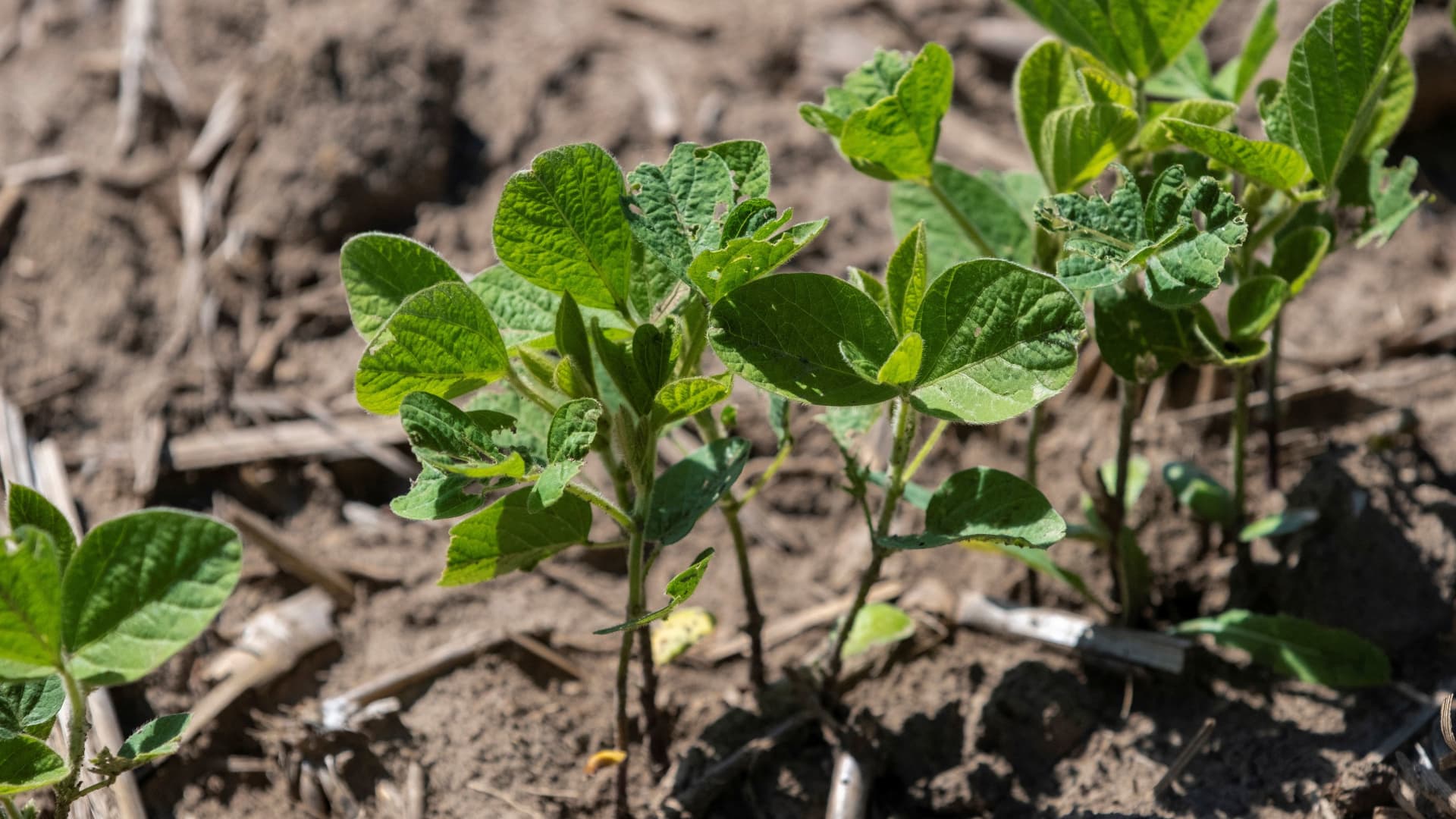Although the Trump administration has announced some temporary tariff relief, its latest escalation with China could still pose a risk to the agricultural sector, according to Wells Fargo. “We continue to see U.S. soybeans as the crop most at risk from China’s retaliatory tariffs,” analyst Richard Garchitorena wrote in a note dated April 10. That’s because China was the leading export market for U.S. soybean exports in 2024 at more than 52%. By contrast, corn faces little impact, he said, given that China only made up more than 2% of all U.S. corn exports last year. Despite the levies, soybean futures are up more than 5% since President Donald Trump last week dropped his steep “reciprocal” tariff rates for most countries to 10% for 90 days. @S.1 mountain 2025-04-09 Soybean futures since April 9, 2025 That bump could be short lived, though. Trump this month also hiked his levies on Chinese imports to 125%, putting the total U.S. tariff rate on China at 145%. The White House earlier this week said that China now faces total tariffs of up to 245% on select goods . China responded with retaliatory measures of its own, raising its duties on U.S. imports to 125% from 84% . To offset the impact of these tariffs, Garchitorena thinks that government subsidies could do the trick, seeing aid to American farmers from the federal government as “likely.” This week, the White House said that it’s weighing giving farmers some assistance, similar to Trump’s first term when that administration offered billions in relief to those hurt by the U.S.-China trade war that started in 2018. Back in 2019, the Department of Agriculture announced a $16 billion bailout , which came on top of the $12 billion emergency aid plan for farmers it unveiled the year before. “Relief is being considered,” White House press secretary Karoline Leavitt said during a Tuesday press briefing. “The secretary of agriculture, I know, has spoken to the president about that, and again, it’s being considered.” Prior to the ramping up of trade tensions between the two countries, the USDA had forecast that direct government farm payments would be $42.4 billion in 2025, an increase of $33.1 billion from the previous year. But this projection “puts the size of any additional aid package in question,” Garchitorena noted. This comes as farmers have been expressing concern that tariffs could hurt their already vulnerable farms. The Purdue University/CME Group Ag Economy Barometer reading for March shows that…
Click Here to Read the Full Original Article at Investing…


